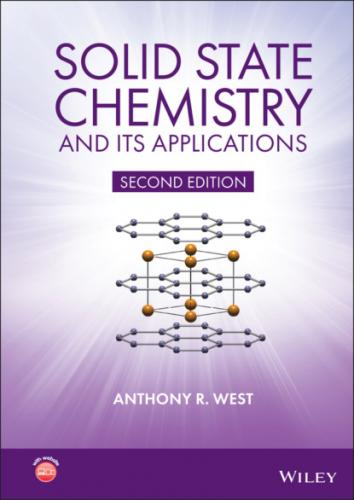| Compounda | a/Å | c/Å | z (M+ ion) | z (anion) | |
|---|---|---|---|---|---|
| K2NiF4 | 4.006 | 13.076 | 0.352 | 0.151 | |
| K2CuF4 | 4.155 | 12.74 | 0.356 | 0.153 | |
| Ba2SnO4 | 4.140 | 13.295 | 0.355 | 0.155 | |
| Ba2PbO4 | 4.305 | 13.273 | 0.355 | 0.155 | |
| Sr2SnO4 | 4.037 | 12.53 | 0.353 | 0.153 | |
| Sr2TiO4 | 3.884 | 12.60 | 0.355 | 0.152 | |
| La2NiO4 | 3.855 | 12.652 | 0.360 | 0.170 | |
| K2MgF4 | 3.955 | 13.706 | 0.35 | 0.15 | |
| Other examples b | |||||
| M2Y6+O4: M = K, Rb, Cs; Y = U, Np | |||||
| Ln2YO4: Ln = La → Nd; Y = Ni, Cu | |||||
| CaLnAlO4: Ln = La → Er, Y | |||||
| SrLnFeO4: Ln = La → Tb | |||||
| SrLnCrO4: Ln = La → Dy | |||||
| BaLnFeO4:Ln = La → Eu | |||||
|
|
|||||
| A2BF4: A = K, Rb, Tl; B = Mg, Ni, Zn, Co, Fe | |||||
| A2BCl4: A = Rb, Cs; B = Cr, Mn, Cd | |||||
| Sr2BO4: B = Ti, Sn, Zr, Hf, Mo, Tc, Ir, Ru, Rh, Mn | |||||
a R. W. G. Wyckoff, Crystal Structures, Vols 1 to 6, Wiley (1971).
b O. Muller and R. Roy, The Major Ternary Structural Families, Springer‐Verlag (1974).
The Aurivillius family of phases are ordered intergrowth structures consisting of one or more perovskite layers of corner‐sharing octahedra separated by single layers of formula Bi2O2. The Bi2O2 layers are formed by a single, 2D square planar net of oxygens in which each square is capped on one side only by Bi3+ to give sheets of pyramids in an alternating ‘up’ and ‘down’ arrangement, Fig. 1.50(b). Bi3+ is a lone pair‐active, heavy p‐block cation and the spatial disposition of the lone pairs acts to separate the Bi2O2 layers from the perovskite blocks. This Bi2O2 structural arrangement is different to the octahedral rock salt arrangement of Bi in the BiSCCO phases.
The general formula of Aurivillius phases is Bi2O2[A m−1M m O3m+1]. Examples include: M=Mo, m = 1 for Bi2O2[MoO4] with a single layer of perovskite‐like octahedra; Bi2O2[SrNb2O7] with a double perovskite layer of NbO6 octahedra and Sr in 12‐coordinate cages; Bi2O2[Bi2Ti3O10] with triple perovskite layers and Bi in the 12‐coordinate perovskite A sites as well as in the Bi2O2 layers.
The Dion‐Jacobsen phases are related to Aurivillius phases but the Bi2O2 layers are replaced by layers of alkali cations to give the general formula A′[A m−1M m X3m+1]. Examples include K[LaNb2O7] that has double perovskite layers and Cs[La2Ti2NbO10] with triple layers.
1.17.15 The aluminium diboride structure (AlB2)
The aluminium diboride family of crystal structures shot to prominence in 2000 when isostructural MgB2 was discovered to be a superconductor with T c = 39 K. It has a relatively simple crystal structure, shown in Fig. 1.51, in which Mg atoms form close packed layers stacked in an AAA sequence, which may be referred to as primitive hexagonal packing, hp. The cp Mg layers are separated by B layers arranged as in graphite; hence Mg is 12‐coordinate with hexagonal rings of B atoms above and below. Each B has three B nearest neighbours in a trigonal planar arrangement and six Mg next nearest neighbours arranged in a trigonal prism.
Numerous borides and silicides have the AlB2 structure, including MB2: M = Ti, Zr, Nb, Ta, V, Cr, Mo, Mg, U, and MSi2: M = U, Pu, Th. The crystal structure of some metal hydroxides such as Cd(OH)2 is also closely related.
The AlB2 structure is closely related to the NiAs structure. In both structures, the metal atoms form a primitive hexagonal array but only half the trigonal prismatic sites are occupied by As in NiAs whereas all trigonal prismatic sites are occupied by B in AlB2. Consequently, the coordination of Ni is octahedral in NiAs instead of 12‐coordinate Al in AlB2.
Figure 1.51 The crystal structure of MgB2 as (a) an oblique projection showing hexagonal rings of B atoms with 12‐coordinate Mg situated between pairs of rings and (b) [001] projection of the crystal structure.
1.17.16 Silicate structures – some tips to understanding them
Silicates,
